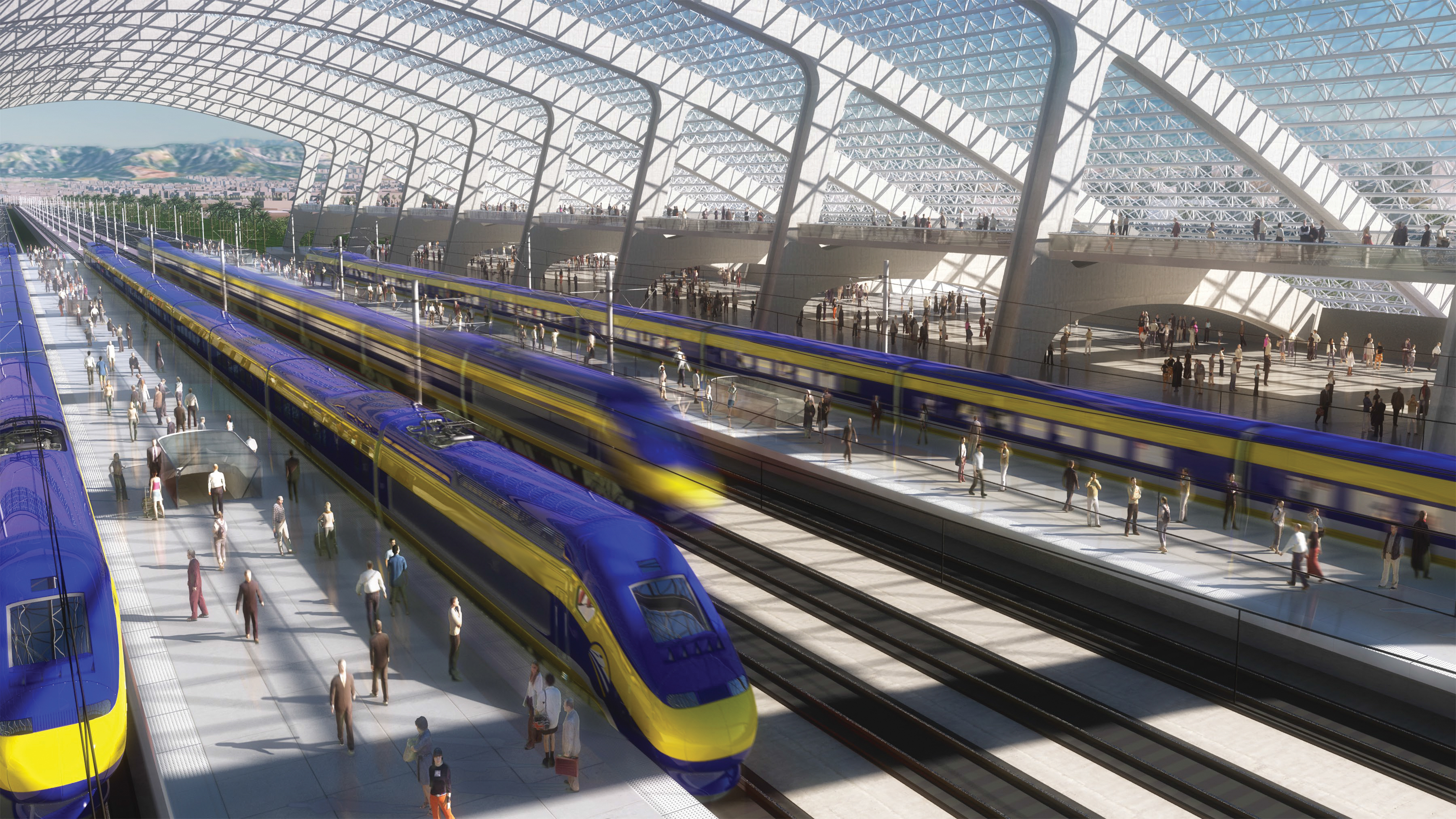

The rail depot project not only prepares Fresno for high-speed rail, it will provide solar power and electric vehicle charging infrastructure needed to modernize additional modes of transportation. “Rebuilding the passenger rail depot in the heart of Fresno will create jobs today, and pave the way for clean, fast transportation that connects the Central Valley and the entire state. Alex Padilla said at a Wednesday morning news conference. “This funding is an important federal investment in California’s pioneering high-speed rail project,” U.S. Padilla, Mayor Dyer Outline What the Funding Will Accomplish “This round of RAISE grants is helping create a new generation of good-paying jobs in rural and urban communities alike, with projects whose benefits will include improving safety, fighting climate change, advancing equity, strengthening our supply chain, and more.” Transportation Secretary Pete Buttigieg in a news release. HSR is an expensive, outdated solution looking for a problem.“Using the funds in President Biden’s infrastructure law, we are helping communities in every state across the country realize their visions for new infrastructure projects ,” said U.S. Americans have planes for long trips, cars for short trips, and some combination of the two for everything in between. Based on the economics, this is the way it should be. Politicians and rail proponents keep trying to make it happen, yet 60 years and billions of dollars later we have nothing to show for it. High-speed rail is the “fetch” of transportation ideas. At these prices, it would cost at least $1 trillion to build a national HSR system, and likely much more. Amtrak estimates that it would cost $500 million per mile to turn its Northeast Corridor route into a true high-speed system. Current estimates for California’s HSR system come in at $80 billion for 520 miles, or $154 million per mile. And given the time it takes to build rail in America- right California? -we will probably have AVs before the first HSR leg is complete.įinally, the cost of HSR is outrageous. AV’s will mitigate congestion, improve traffic safety, decrease the cost of car ownership, and, if all goes according to plan, even allow people to do other things while traveling, just like trains. Moreover, travelling by car is only going to get better as autonomous vehicle (AV) technology improves. cities since they are not built for pedestrian or other car-less modes of travel. had 0.52 vehicles per person in 2014, while Canada had 0.61, Japan had 0.59, and Germany had 0.57.įor most people, riding a train with other people that only departs at certain times is less appealing for short to medium-length trips than driving a car that leaves according to your schedule, especially if you need a car at your destination anyway. By 2014, the number of motor vehicles per person had increased to 0.8. In Thompson’s 1994 article, he notes that America had 0.57 cars per person. air travel being more convenient, faster, and relatively cheap by world standards, Americans also have cars and an extensive highway system for shorter trips. As economist Eli Dourado points out, with better technology and the right regulation, we could have planes that regularly travel over 750 mph in the not-so-distant future. The average commercial jet speed in America is more than double that at 500 mph, but it is possible to go much faster. The fastest passenger train in the world is China’s Beijing to Nanjing line that travels at nearly 200 mph. Compared to many countries, it is easy to get to any metro area in America via a plane, and many of the flights between big metro areas are direct. America has more airports per million people (43) than many European and Asian countries, including Germany (7), France (7), the U.K. The cost difference is even higher in Sweden (+37%), Japan (+73%), Finland (+222%), Germany (+39%), Canada (+108%), South Korea (+630%), Spain (+59%), and many other countries.Īmerica also has a more extensive network of airports than most countries. Similar flights in France cost $6.58, or 18% more. A 2017 analysis of air travel costs found that the average cost of short-haul low-cost flights (flights less than 800 miles or three hours, so many domestic flights) is $5.41 per 100 kilometers in America. Air travel is much cheaper in America than in other countries with extensive rail systems. Proposed rail hubs Denver, Nashville, and Atlanta have population densities of 4,700 1,300 and 3,700 people per square mile, respectively.Īmerica also has more competitive substitutes for trains.

Once you get outside New York and San Francisco, U.S.


 0 kommentar(er)
0 kommentar(er)
